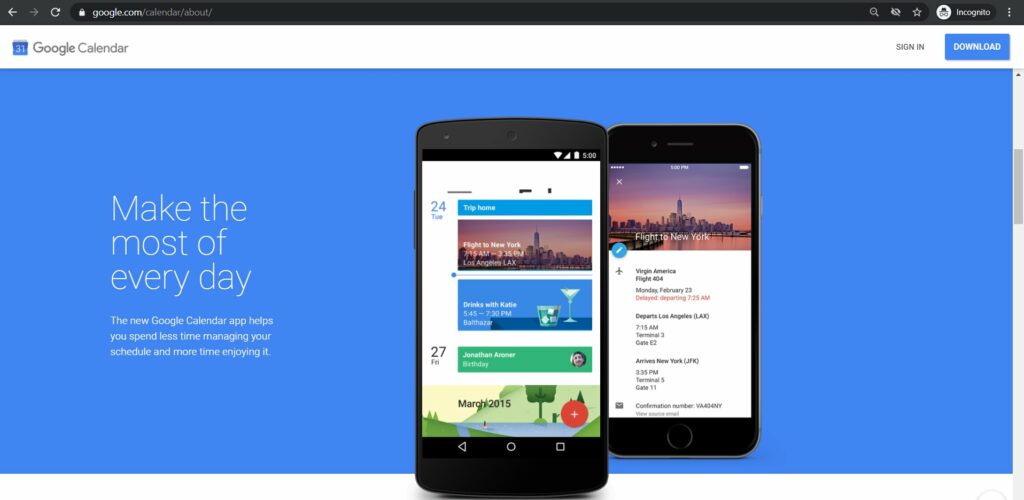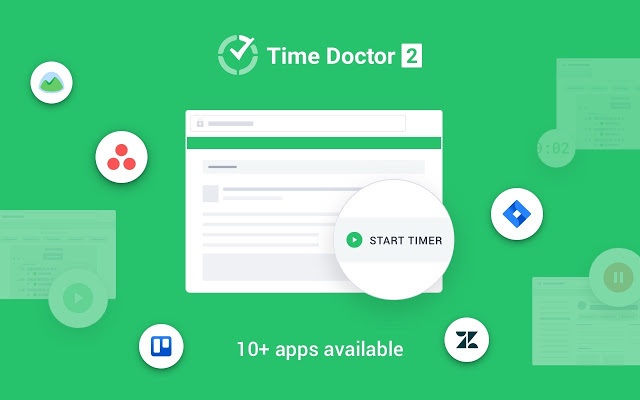Want to know how to improve time management?
Whether you’re a business owner or an employee, you might find it difficult to utilize time well.
The secret to accomplishing more in a short amount of time is effective time management.
You’ll need to have great time management skills to plan your day and reduce stress levels.
In this article, we’ll discuss a few time management tips and introduce a few popular time management techniques that can help boost your productivity.
This article includes:
(Click on the link to jump to a particular section)
Let’s get started.
What is time management?
Time management involves careful planning on how you’ll split your time across various activities. This way, you can optimize your schedule to complete tasks within a predetermined time.
With good time management, you can enjoy a better work life balance, having enough time for hobbies, personal errands, etc.
Generally, time management skills can be divided into two categories:
- Primary: Primary time management skills include planning, organizing, prioritizing, etc.
- Secondary: Secondary time management skills comprise more self-care activities like eating healthy, getting adequate sleep, etc.
You need to have both primary and secondary skills to manage your time better.
How to improve time management?
Let’s take a look at ten effective time management tips to help you achieve your short-term and long-term goals:
1. Prepare a daily schedule
Creating a daily schedule is an essential time management tip and good habit that’ll give you a clearer idea of how you should go about your day.
Here are four steps to drafting a great schedule:
A. Set a SMART goal
Before you create a to-do list, you should have an overarching goal that you want to work towards. You can then include tasks that help you achieve that goal in your to-do list.
You’ll have to start by setting a SMART goal.
How is a SMART goal different from a normal goal?
Since goal setting is a hard decision-making process, many professionals set the wrong goals and fail to achieve the desired results. That’s why your goals should be:
- Specific: Your goals should be well-defined and understandable so that you’ll know how to attain them.
- Measurable: You can track your progress if your goals are measurable.
- Achievable: They can be challenging but realistic.
- Relevant: They have an impact on your life and career.
- Time-bound: They have a clear deadline and give a sense of urgency.
Whether you set a short or long term goal, SMART goals can help guide you in the right direction and ensure your daily schedule can set you up for success.
B. Create a to-do list
The next thing to do after goal setting is to plan how to accomplish it.
Prepare a daily checklist for this, consisting of all your tasks along with a time limit for each task.
You can include regular breaks and other leisure activities in your to-do list to maintain an excellent work-life balance.
C. Prioritize tasks
The tasks in your to-do list will have different deadlines and might be arranged randomly. This means that you might not finish the urgent tasks on time if they’re at the bottom of the list.
To tackle this issue, you need to organize all tasks based on their priority and significance.
For example, the tasks that have to be submitted the next day should be on the top of the list. Similarly, prioritize all the other tasks and arrange them in the list accordingly.
You could also consider batching similar tasks together for easy management. For example, you can schedule easy tasks like ‘checking email,’ and ‘calling clients’ one after another.
D. Block time
After preparing a to-do list and prioritizing tasks, you have to block specific times for each task on your calendar.
Blocking time will give you a visual idea of your schedule and assist you to concentrate on the task at hand.
This way, you can track the amount of time you take to complete specific tasks.
Remember to finish difficult tasks when your energy levels are high and block time for smaller tasks towards the end of the day.
2. Take regular breaks
Taking regular breaks is a smart way to work.
Why?
An average person can’t focus on a specific task for more than two hours at a stretch.
You can take short walks or coffee breaks if you’re working in an office. And if you’re working from home because of the COVID 19 pandemic, you can utilize your break time to do chores.
These short breaks should be a regular part of your day so that your brain gets the rest it deserves.
3. Have productive meetings
Meetings occupy a good part of every working day.
But how productive are they?
According to The State of Enterprise Work: U.S Edition 2019, unproductive meetings occupy 8% of an employee’s workweek.
In fact, businesses lose around $37 billion every year due to unplanned and ineffective meetings!
Here are a few tips for hosting productive meetings:
- Start every meeting with an agenda: Having a list of topics to talk about will guide the meeting in the right direction.
- Assign roles to people: The best way to keep people productive is by assigning them roles in a meeting. For example, you could ask one of them to block time for every topic and someone else to take down the minutes of the meeting.
- End the meeting with a decision: It’s necessary that the outcome of the meeting is addressed before you wrap up. All team members can express their opinion at the end of the meeting and make a decision accordingly.
4. Delegate tasks
Delegating tasks is a time management skill that can help you with stress management as well. You can focus on the most important task and prevent worrying about the other tedious ones.
If you are a manager, you can utilize your team member’s talents if you delegate tasks logically.
For example, a data entry task will take less time to complete if you assign it to someone who has great typing skills.
Closely observe your team members, assess their skills, and find the right person for the task.
Then, explain the task carefully and ensure they understood how to go about it.
You can also use this as an assignment to evaluate your team member’s potential and reward them with a raise or promotion.

5. Break the habit of multitasking
Multitasking is a word that’s positively associated with work.
While it’s true that you can get more things done by multitasking, it isn’t productive.
In fact, studies say that multitasking can reduce productivity by 40%!
While multitasking, your brain switches between tasks, and it takes time to find where it left off after every switch. That’s why multitasking is more time-consuming than working on one task at a time.
You can prevent multitasking by:
- Sleeping for at least 8 hours a day so you can focus better.
- Resisting and reducing distractions at your workspace.
- Using the Pomodoro Technique to focus on one task for 20 minutes at a time.
6. Keep distractions at bay
Distractions can be in any form of your mail inbox, tempting social media notifications, a noisy environment, etc.
No matter what your distraction is, you should block it out.
How?
You can switch off your email and social media notifications, use earplugs while you work, or anything else that can help you focus.
Modern platforms like Slack, Facebook, etc. have features that let you pause or mute notifications. These features will help you manage your workflow better.
7. Prevent overworking
Gallup’s report stated that around 76% of employees overwork occasionally, and 28% of employees experience burnout often.
In most cases, the cause of burnout is working on too many tasks in a single day.
How can you avoid this?
You can create a list of tasks to know when your schedule is packed. Having a schedule will show you the tasks that are yet to be completed.
You can take up more work according to how hectic your schedule is, and say ‘no’ when your schedule is packed.
8. Avoid procrastination
Procrastination is more common than you think.
According to a study, around 20% of people admit having problems with procrastination and 25% of them say procrastination is their personality trait.
How can you stop procrastinating?
Start by creating a to-do list and strictly sticking to it.
Ensure that you don’t overestimate your capacity to complete tasks. So, try not to take up tasks once your schedule is full.
Another way to prevent procrastination is by rewarding yourself when you achieve your goal.
This will also motivate you to work, and make your work life more enjoyable.
9. Take time out for yourself
Employees with a good work life balance put in 21% more effort at work, so it’s a great idea to manage your personal and professional better.
How do you attain an excellent work life balance?
Here are a few tips to help you do just that:
- Start your day with exercise or meditation.
- Block little time for yourself every day, and do something you enjoy.
- Keep time aside for family.
- Spend weekends on hobbies, etc.
10. Use technology
There are hundreds of tools out there that can help you track and improve productivity.
Here are a few software that can help you manage time:
A. Time blockers
Remember, time blocking involves dividing your day into blocks of time according to your tasks.
Allotting specific time for specific tasks gives a ‘visual’ representation of your schedule and helps you to stick to it.
Google Calendar is a great time blocking tool that can help you view your weekly schedule with ease.

B. Project management software
Project management software will help you stay organized when dealing with multiple projects.
They help you measure project progress, so you can complete tasks on time and ensure project success.
Trello is a project management tool that can help you:
- Assign tasks and projects to your team.
- See the status of every task with the Kanban board.
- Collaborate with other team members with comments.

C. Productivity tools
Managing time is a challenge everyone faces.
Don’t worry. The key to effective time management is knowing where you spend your time.
By tracking time, you can:
- Replan your schedule.
- Make strategic improvements.
- Increase productivity, and a whole lot more.
But how do you track time?
If you want a convenient and efficient software to track time and productivity, you should definitely try using Time Doctor.
Time Doctor tracks all workday activities, giving you real-time and actionable insights to improve time management.

Workday data from Time Doctor include:
- Total hours worked per user.
- Start and end time.
- Productivity breakdowns by day, week, or month.
- Top used websites and applications.
- Top projects and tasks by hours worked.
- Daily timeline overview.
- View productivity reports and improve performance.
4 simple time management techniques
Here are a few popular time management strategies you should try out:
1. Eisenhower matrix
This management strategy helps you prioritize your task list and get more done.
All your tasks can be divided into four quadrants:
- 1st Quadrant: Includes tasks that are important and urgent.
- 2nd Quadrant: Consists important tasks that can be done later.
- 3rd Quadrant: Can be delegated to your team members.
- 4th Quadrant: These tasks can be removed from the list.
2. Pomodoro technique
The Pomodoro technique helps you schedule tasks and breaks in such a way that you won’t feel exhausted.
Here’s a step-by-step guide to help you out:
- Choose a task to work on.
- Work for 25 minutes on the task to complete one Pomodoro.
- Take a short break of 5 minutes after finishing a Pomodoro.
- Repeat the previous steps.
- After every 4 Pomodoros, you can take a break of 20-30 minutes.
3. ABCD method
The ABCD method is similar to the Eisenhower technique. It helps separate out the relevant tasks from the redundant ones.
You have to divide all your tasks based on their importance. Each alphabet stands for:
- A: All urgent tasks.
- B: Tasks that have to be completed to start other tasks.
- C: Tasks that are unnecessary.
- D: Tasks that can be delegated.
- E: Tasks that you should avoid doing.
4. Pareto principle
The Pareto Principle states that 80% of the outcome is dependent on 20% of the total number of tasks.
How can we apply it to our schedule?
- Make a list of every daily task.
- Determine the important work tasks based on which ones give you more significant results.
- Complete the more important tasks first. For example, if you have ten tasks to do, complete two of the most important ones.
This principle is widely used in different fields including marketing. You can also apply this principle to set goals.
Here are more time management activities to increase productivity.
Wrapping up
Time management is an essential requirement to succeed in and outside work. You can master this skill with enough discipline and dedication.
Moreover, managing time has become more comfortable with software and advanced strategies. With these techniques, you can achieve higher productivity and efficiency at work.
Introduce these time management tips and tools into your life and see how much time you can save.

Liam Martin is a serial entrepreneur, co-founder of Time Doctor, Staff.com, and the Running Remote Conference, and author of the Wall Street Journal bestseller, “Running Remote.” He advocates for remote work and helps businesses optimize their remote teams.


